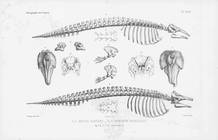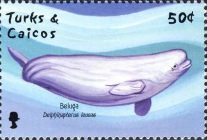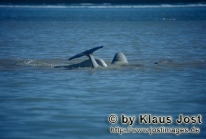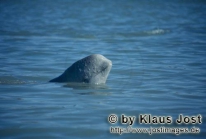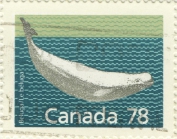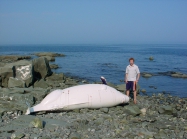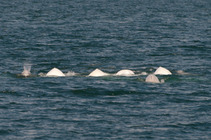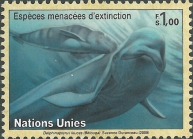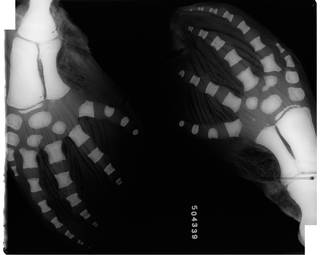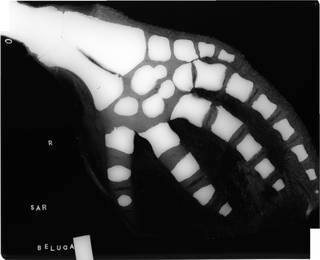
| Intro | | About | | Wiki | | Search traits | | Data explorer | | Literature | | Definitions | | Sources | | Webservices | | Statistics | | Feedback | | Editors | | Log in |
CaRMS taxon detailsDelphinapterus leucas (Pallas, 1776)
137115 (urn:lsid:marinespecies.org:taxname:137115)
accepted
Species
marine, brackish, fresh,
(of ) Pallas, P. S. (1776). Reise durch verschiedene Provinzen des Russischen Reichs. Vol. 3. <em>Kayserliche Academie der Wissenschaften, St. Petersburg.</em> 1-454., available online at https://gdz.sub.uni-goettingen.de/id/PPN330048503 [details]
Note Mouth of Ob River, northeastern Siberia,...
From editor or global species database
Type locality Mouth of Ob River, northeastern Siberia, Russian Federation [details]
Distribution Subarctic area
Distribution Subarctic area [details] Distribution East Pacific; Eastern Atlantic Ocean, Europe and Northern Asia (excluding China); Indo-West Pacific; Western Atlantic Ocean
Distribution East Pacific; Eastern Atlantic Ocean, Europe and Northern Asia (excluding China); Indo-West Pacific; Western Atlantic Ocean [details]
Perrin, W.F. (2021). World Cetacea Database. Delphinapterus leucas (Pallas, 1776). Accessed through: Kennedy, M.K., L. Van Guelpen, G. Pohle, L. Bajona (Eds.) (2021) Canadian Register of Marine Species at: https://www.marinespecies.org/carms/aphia.php?p=taxdetails&id=137115 on 2025-05-09
Nozères, C., Kennedy, M.K. (Eds.) (2025). Canadian Register of Marine Species. Delphinapterus leucas (Pallas, 1776). Accessed at: https://www.marinespecies.org/CaRMS/aphia.php?p=taxdetails&id=137115 on 2025-05-09
Date action by
original description
(of ) Pallas, P. S. (1776). Reise durch verschiedene Provinzen des Russischen Reichs. Vol. 3. <em>Kayserliche Academie der Wissenschaften, St. Petersburg.</em> 1-454., available online at https://gdz.sub.uni-goettingen.de/id/PPN330048503 [details]
basis of record van der Land, J. (2001). Tetrapoda, <B><I>in</I></B>: Costello, M.J. <i>et al.</i> (Ed.) (2001). <i>European register of marine species: a check-list of the marine species in Europe and a bibliography of guides to their identification. Collection Patrimoines Naturels,</i> 50: pp. 375-376 (look up in IMIS) [details] additional source Carwardine, M., E. Hoyt, R. E. Fordyce and P. Gill. 1998. Whales, dolphins and porpoises. Time-Life Books. Nature Company Guides, USA. 288 p. [details] additional source Animal Diversity Web. <em>University of Michigan Museum of Zoology.</em> , available online at http://animaldiversity.ummz.umich.edu/site/index.html [details] additional source Mead, J. G.; Brownell, R. L. Jr. (2005). Cetacea. <em>In Wilson, D.E. & D.M. Reeder (eds). Mammal Species of the World. A Taxonomic and Geographic Reference (3rd ed), Johns Hopkins University Press, 2,142 pp.</em> 723--743., available online at http://www.bucknell.edu/msw3/ [details] additional source Rice, D. W. (1998). Marine mammals of the world. Systematics and distribution. <em>Society for Marine Mammalogy Special Publication.</em> 4., available online at http://www.marinemammalscience.org/wp-content/uploads/2014/09/MarineMammalsOfTheWorld.pdf [details] additional source Hershkovitz, P. (1966). Catalog of Living Whales. <em>Bulletin of the United States National Museum.</em> (246): 1-259., available online at https://doi.org/10.5479/si.03629236.246 [details] additional source Jefferson, T. A., M. A. Webber and R. L. Pitman. (2008). Marine mammals of the world. Academic Press, Amsterdam. [details] additional source IUCN Red List of Threatened Species, available online at http://www.iucnredlist.org [details] additional source Perrin, W.F.; Würsig, B.; Thewissen, J.G.M. (2009). Encyclopedia of marine mammals. Second edition. Academic Press: London. ISBN 978-0-12-373553-9. xxix, 1316 pp. (look up in IMIS) [details] additional source Leatherwood, S., R. R. Reeves, W. F. Perrin and W. E. Evans. (1982). Whales, dolphins, and porpoises of the eastern North Pacific and adjacent Arctic waters. A guide to their identification. NOAA Technical Report NMFS Circular 444. 245pp. [details] additional source Stewart, B. E. and R. E. A. Stewart. (1989). Delphinapterus leucas. Mammalian Species 336:1--8. [details] additional source Integrated Taxonomic Information System (ITIS). , available online at http://www.itis.gov [details] ecology source Looby, A.; Erbe, C.; Bravo, S.; Cox, K.; Davies, H. L.; Di Iorio, L.; Jézéquel, Y.; Juanes, F.; Martin, C. W.; Mooney, T. A.; Radford, C.; Reynolds, L. K.; Rice, A. N.; Riera, A.; Rountree, R.; Spriel, B.; Stanley, J.; Vela, S.; Parsons, M. J. G. (2023). Global inventory of species categorized by known underwater sonifery. <em>Scientific Data.</em> 10(1). (look up in IMIS), available online at https://doi.org/10.1038/s41597-023-02745-4 [details]  Present Present  Inaccurate Inaccurate  Introduced: alien Introduced: alien  Containing type locality Containing type locality
From editor or global species database
Holotype None preserved. Name based on freshly harpooned animals. [details]IUCN Red List Category subpopulation Cook Inlet beluga whale : Critically Endangered (CR) [details] IUCN Red List Category Near Threatened (NT) [details] Importance Belugas have been hunted for centuries for a variety of products. Beluga meat has been used to feed humans and domestic animals, the blubber used in making soap, lubricants, and margarine, and the fat of the head as a high quality lubricant. The skin has been tanned to make boots and laces. Current use is for aboriginal subsistence. [details] Morphology Distinguishing characteristics: Belugas are white-colored whales with a fusiform body shape and a large melon on the head. This melon is thought by some to focus echolocation tones, although this is in question. The melon can also be used as an indicator of health (poorly nourished belugas have low flat melons while well fed individuals have round melons) and of emotional state--agressive individuals raise their melons forward. There are no dorsal fins. Thirty-eight teeth are present. Males are larger than females. [details] Reproduction Calving occurs between April and September. Gestation is one year. Weaned in 1.5-2years. [details] Type locality Mouth of Ob River, northeastern Siberia, Russian Federation [details] Unreviewed
Diet large variety of fish, various crustaceans and other bottom living invertebrates [details]Dimensions Length: male 12-18' (3.7-5.5 m), female 10-13 1/2' (3-4.1 m), at birth 5'+ (1.5 m +); Weight: 500-1500 kg [details] Distribution Subarctic area [details] Distribution East Pacific; Eastern Atlantic Ocean, Europe and Northern Asia (excluding China); Indo-West Pacific; Western Atlantic Ocean [details] Habitat inshore including estuaries and rivers in summer, sometimes offshore [details] Habitat mostly coastal, also in estuaries and rivers [details] Predators None [details]
To Barcode of Life (13 barcodes)
To Biodiversity Heritage Library (359 publications) To European Nucleotide Archive, ENA (Delphinapterus leucas) To GenBank (139136 nucleotides; 53618 proteins) To Global Biotic Interactions (GloBI) To IUCN Red List (Least Concern) To NMNH Extant Collection (USNM 504339 Delphinapterus leucas Radiograph 001) To NMNH Extant Collection (USNM 571021 Delphinapterus leucas Radiograph 001) To PESI To ITIS |
